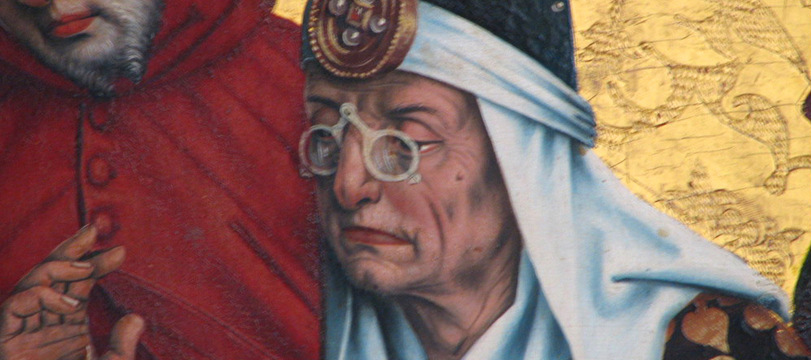
04:01 -
© EYESEEmag

04:01 -
© EYESEEmag
EYESEEmag turns back the clock to bring you the story of glasses around the world,in ten images of emblematic styles from each era.
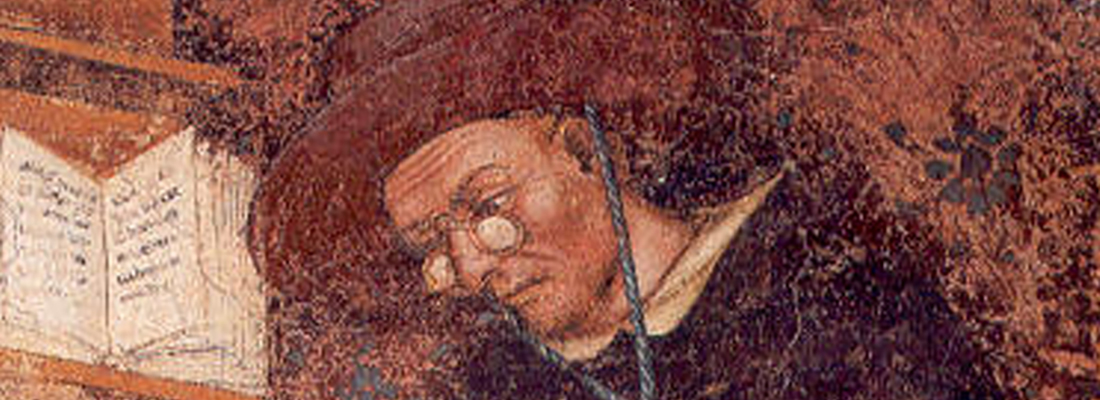
© Dignitaire dominicain portant des lunettes pour la lecture, Tommaso da Modena (1352)
If the first known research into how the eye works and how to correct vision problems goes back to Ancient times, the concept of wearing glasses did not appear until the 13th century.
Several figures have been credited with inventing glasses, including the Italian monks Alessandro Spina and Salvatino d’Armato and the English friar Roger Bacon, but in reality, their exact origin remains unknown. However, it is almost certain that they appeared for the first time in a monastery.
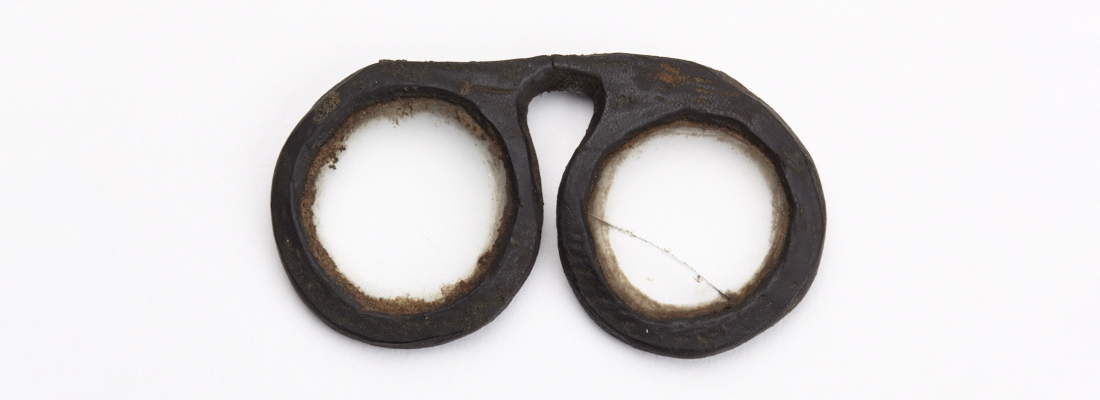
© Bésicles en cuir bouilli et découpé au couteau XVIIIe siècle, réalisé d’après un modèle du XVsiècle - © Musée de la lunette – Morez / Studio Vision / Collection Essilor – Pierre Marly
The history of glasses starts in the 13th century, with something called ‘besicles’, or ‘rivet glasses’.
The armless glasses, made up of two lenses held in front of the eyes or tied at the back of the head with a ribbon were especially heavy and uncomfortable. First worn by educated people including monks, doctors and philosophers, it was only after 1450 and the invention of the printing press that a need – and therefore demand – for glasses grew.
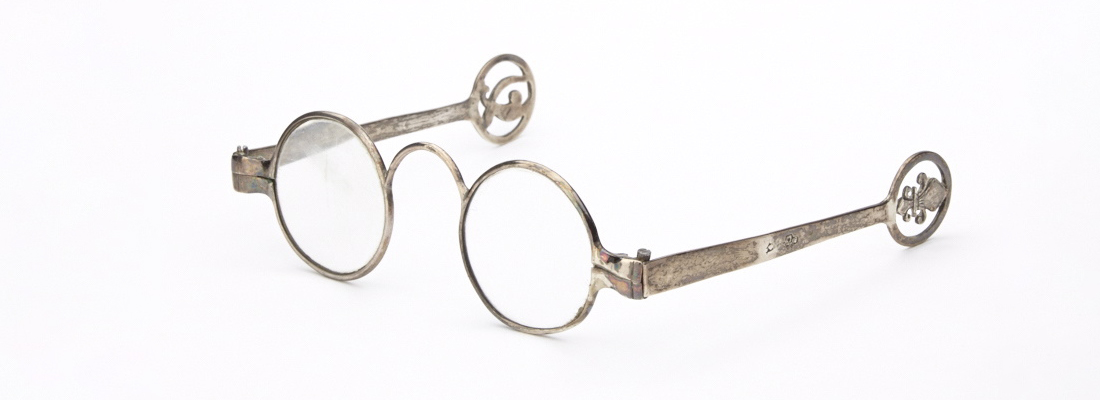
© Lunettes à tempes argent, XVIIIe siècle, attribuées à Louise Victoire (fille de Louis XV et Marie Leszczynska) - © Musée de la lunette – Morez / Pierre Guenat / Collection Essilor – Pierre Marly
It wasn’t until the 18th century that the first temples, or arms, appeared on lenses articulated with a hinge.
Temple glasses freed the wearer’s hands from having to hold a device and also their nose from taking all the weight of the heavy lenses. In early models, the arms finished at the temples, undoubtedly to facilitate wig-wearing. As they exerted strong pressure on the wearer’s temples, the arms were often covered in velvet for greater comfort.
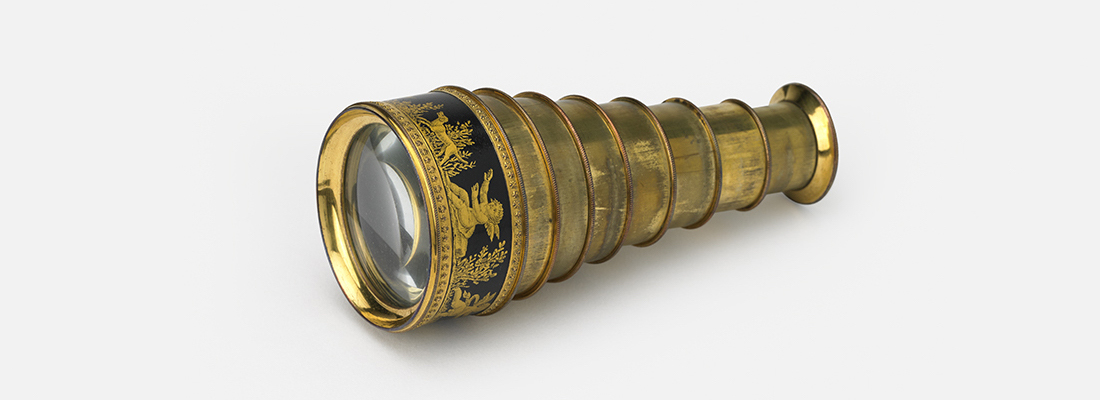
© Lorgnette, laiton et décor vernis, début XIXe siècle - © Musée de la lunette – Morez / Pierre Guenat / Collection Essilor – Pierre Marly
During the 18thcentury, spectacles began to take on new forms and with the influence of the chattering classes, became real fashion accessories. “We have glasses housed in walking canes, hats, inside fans, attached to rings, on necklaces, even hidden inside a snuffbox,” says Dr Pansier in his book Histoire des Lunettes, published in 1901. lorgnettes, generally made from fine materials, were considered the pinnacle of elegance. Frequently seen in the audience at the opera, theater and during walks about town, the miniature spyglasses was more about getting the wearer noticed than correcting any vision problems.
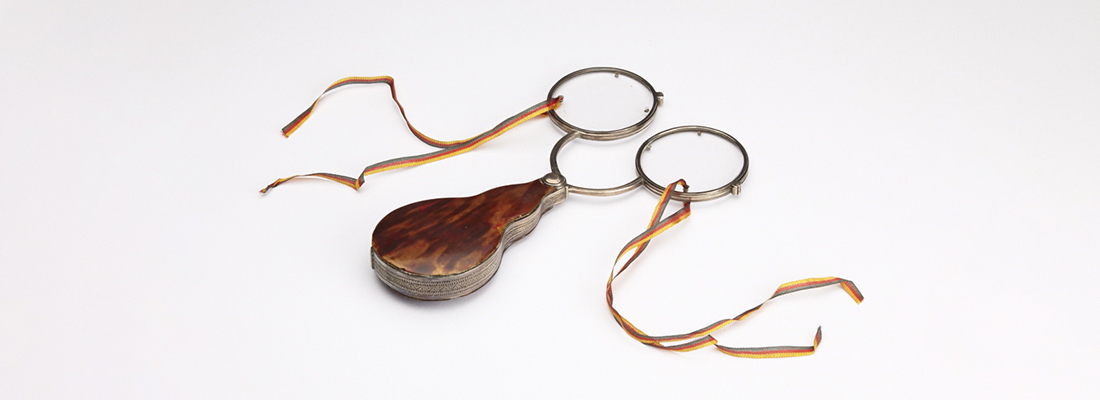
© Binocles, écaille de tortue et argent, fin du XVIIIe – début du XIXe siècle - © Mu-sée de la lunette – Morez / Studio Vision / Collection Essilor – Pierre Marly
With the French Revolution, the youth of the moneyed classes who opposed the Jacobin regime took to wearing extravagant fashions to communicate their disapproval. At this point, binocles made a (brief) appearance in the history of glasses. Without arms and similar to a pince-nez, binocles were hand-held and could be worn on a chain as jewelry. Again, the role of adornment was more important than correcting vision and the fashion for binocles only lasted around a decade. Despite this, the term ‘binocle’ found a place in the French language and is still used today to mean glasses.
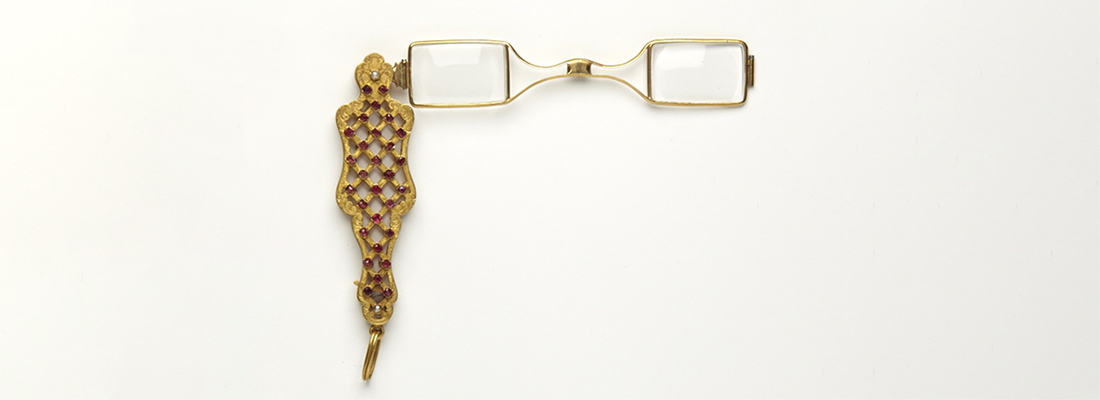
© Face-à-main, or, pierres précieuses serties, fin du XIXe siècle, ancienne apparte-nance : Sarah Bernhardt © Musée de la lunette – Morez / Studio Vision / Collection Essilor – Pierre Marly
Even if comfortable, efficient glasses with arms had proved their worth, in the 19th century, aesthetics were still more important. During this period, face-à-main handheld glasses saw great success with the bourgeoisie. Two lenses joined together and held by a handle were firstly reserved for men before being picked up by women. Much more than a visual aid, the face-à-main was a real piece of jewelry, crafted from fine materials like gold, precious stones, mother-of-pearl and ivory, depending on the fashions of the day and the client’s personal style.
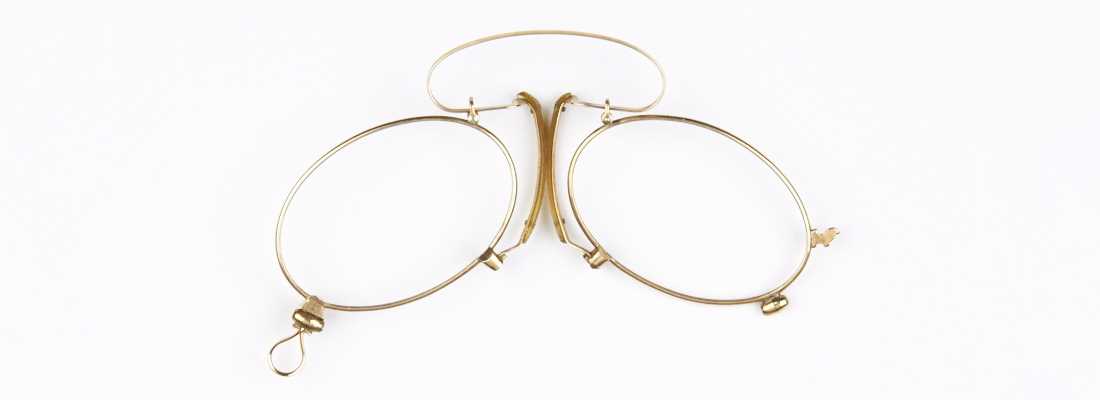
© Pince-nez, acier doublé or, XIXe siècle - © Musée de la lunette – Morez / Studio Vision / Collection Essilor – Pierre Marly
The 19thcentury was marked by technical advancements and saw the dawn of the glasses industry itself. In France, the town of Morez, in the Jura region, developed rapidly as a center of the industry and the pince-nez appeared. The glasses pinched the nose with two lenses held together by a spring. Although it freed the wearer’s hands, this kind of visual prosthesis was particularly uncomfortable. As well as making it difficult to breathe and changing the voice, the pince-nez followed the movements of the wings of the nose and lacked stability.
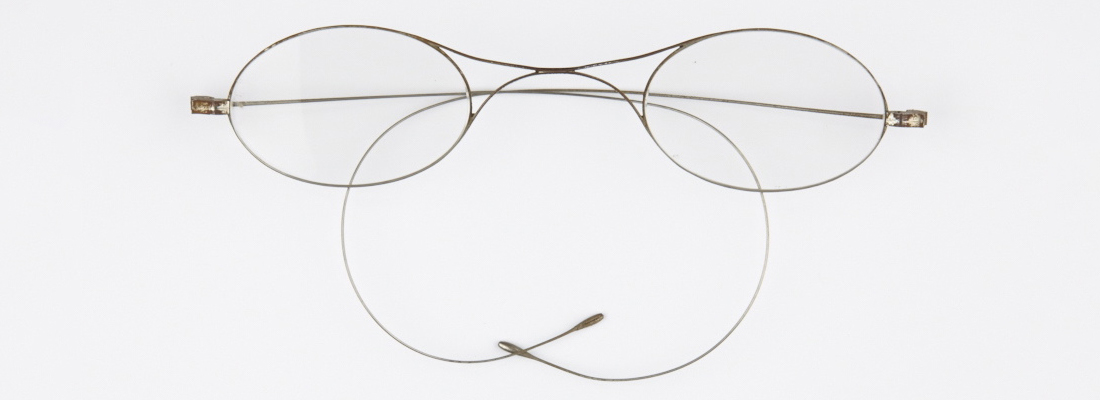
© Lunettes-fils ou lunettes-cheveux, acier, XIXe siècle – début du XXe siècle / © Musée de la lunette – Morez / Studio Vision / Collection Essilor – Pierre Marly
During the second half of the 19thcentury, another specialty developed in the town of Morez; wire-frame glasses, known in France as ‘lunettes-fils’, in which especially fine lenses were ringed with iron wire.
This kind of frame required great precision and manufacturers in Morez again showed remarkable technical expertise.
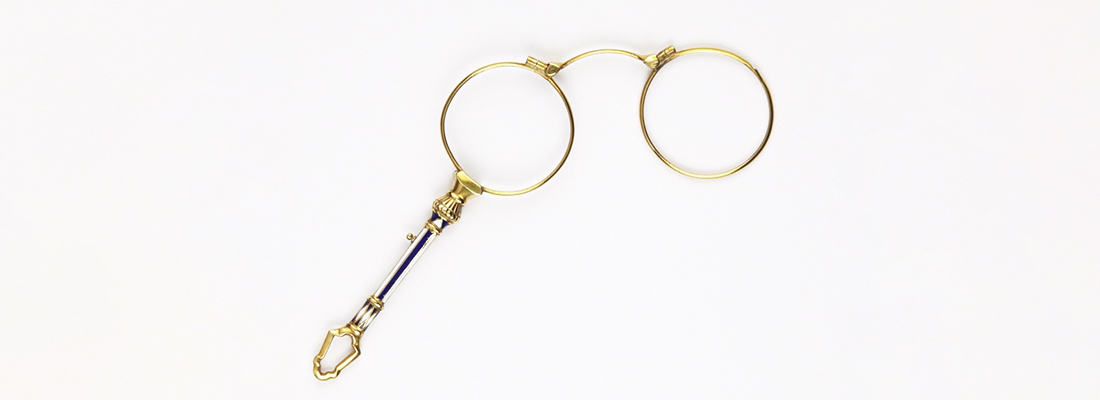
© Lancetier, doublé or, début du XXe siècle / © Musée de la lunette – Morez / Studio Vision / Collection Essilor – Pierre Marly
Between 1900 and 1925, a very particular fashion developed in the history of glasses. The lancetier was a pair of lenses mounted on a handle, that opened when the wearer pressed a button.
As well as boasting this particularly sophisticated mechanism, the lancetier was often very elaborately designed and finished. It was primarily used by men and carried in the hand as an elegant accessory.
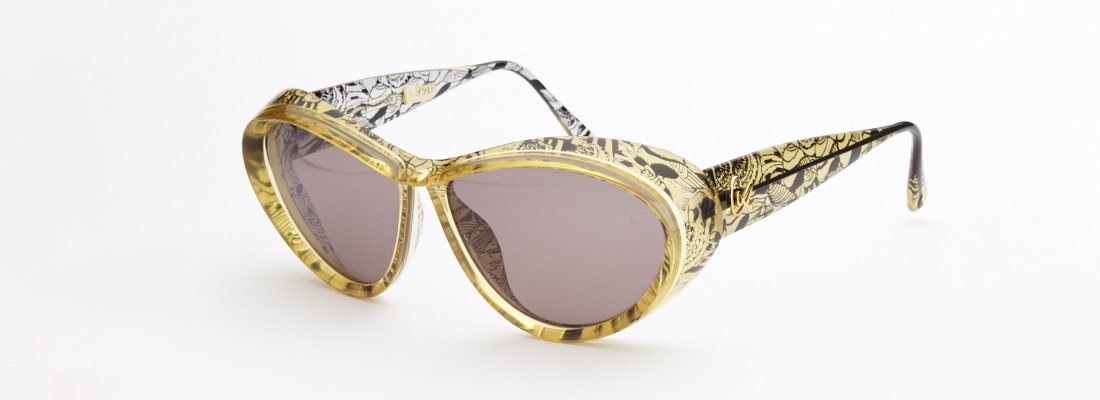
Lunettes plastique © Musée de la lunette – Morez / Studio Vision / Collection Essilor – Pierre Marly
The arrival of plastics in the 20thcentury allowed manufacturers to give their creativity free rein. After the brief usage of highly inflammable cellulose nitrate for frames in the 1950s and 1960s, cellulose acetate took over, offering wide possibilities for glasses-makers both in terms of color and usage. Cellulose acetate is still one of the most popular materials for glasses, today. All pieces shows are available to see in the permanent collection of the Musée de la Lunette (Place Jean Jaurès, 39400 Morez, France). www.musee-lunette.fr
